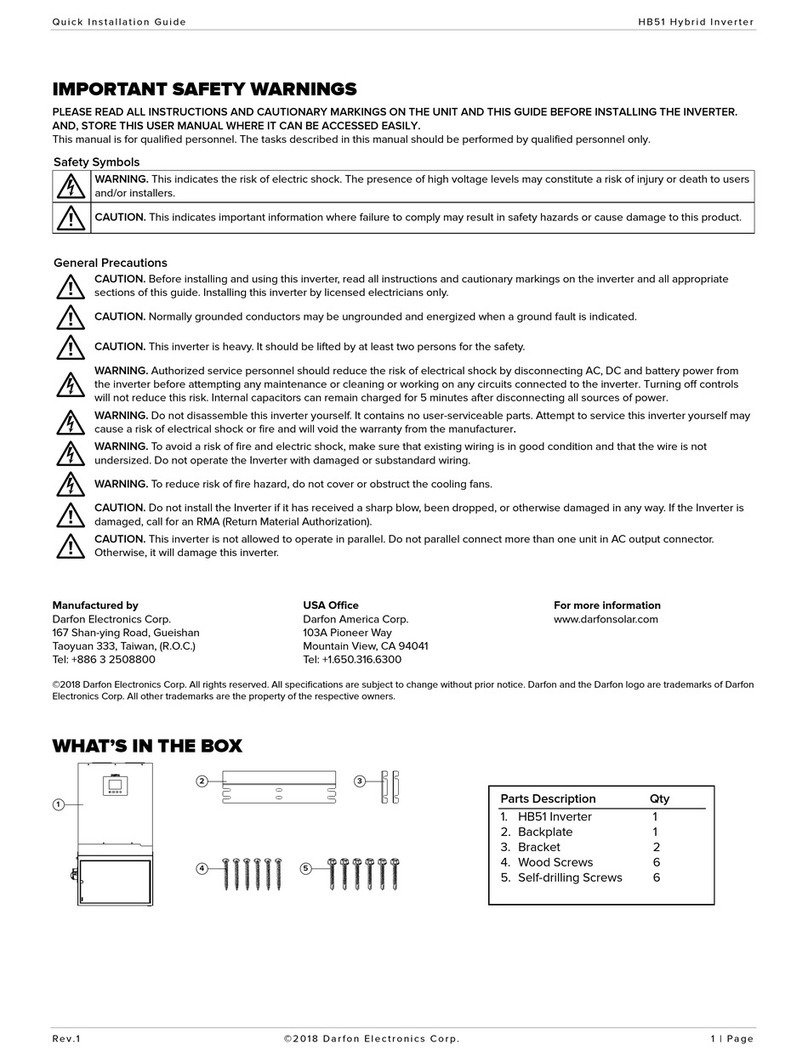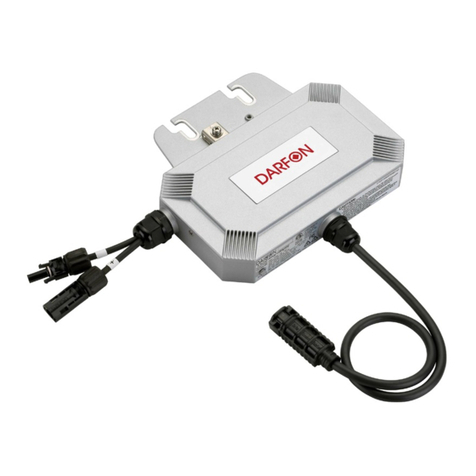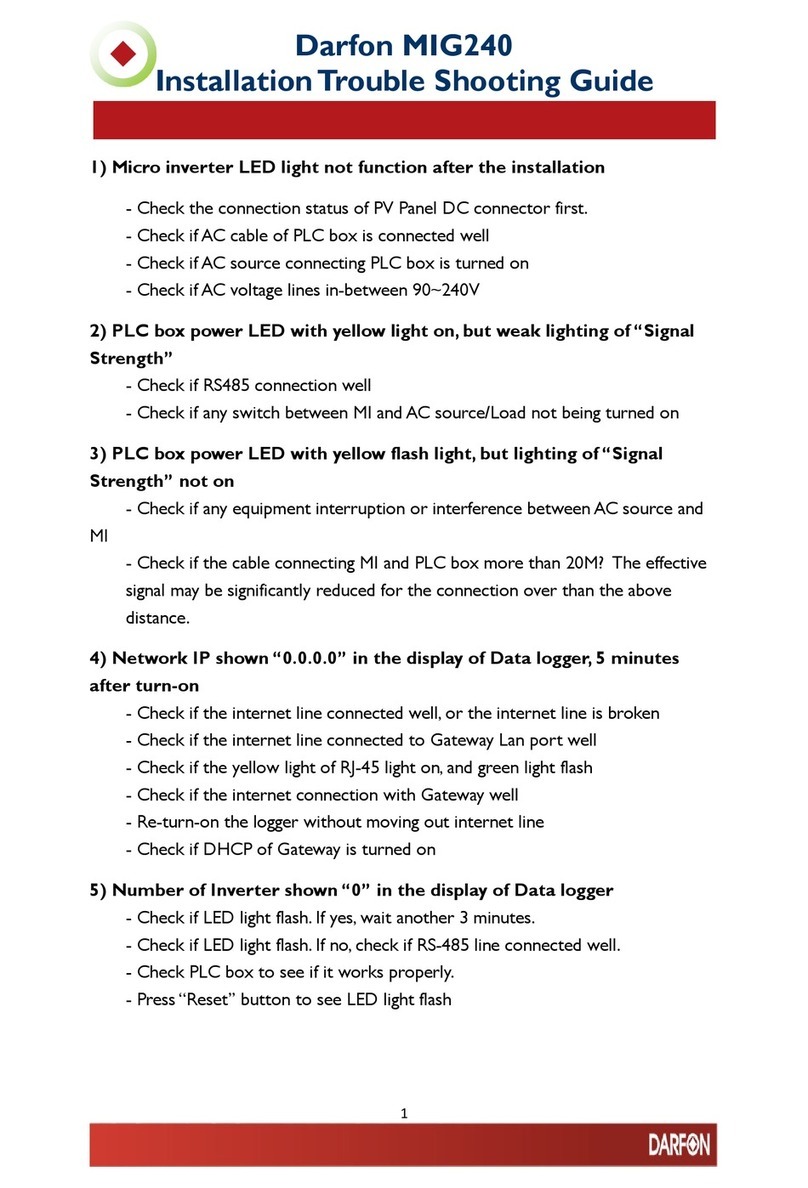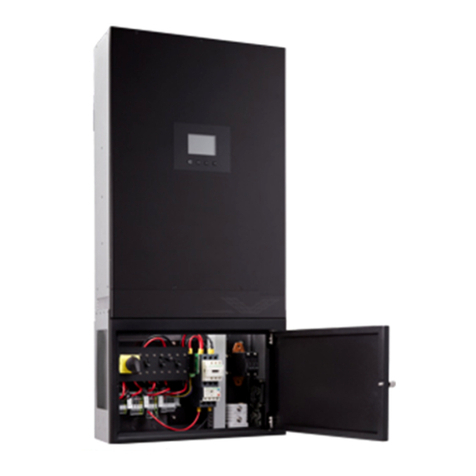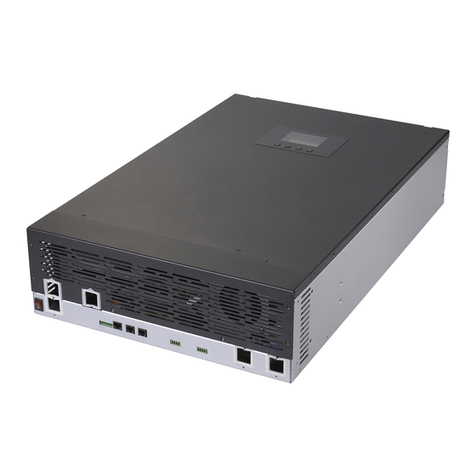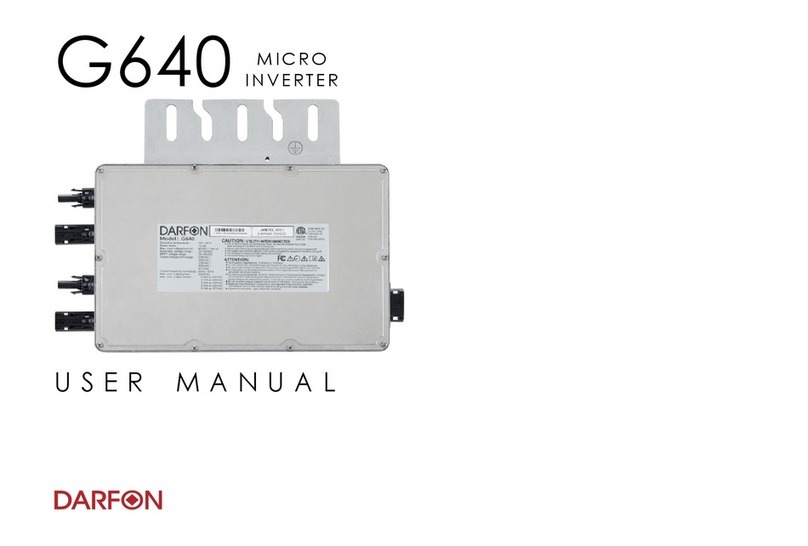G 3 2 0 M i c r o I n v e r t e r U s e r M a n u a l
G 3 2 0 + 1 T c a b l e U s e r Manuals-non monitoring system(for BD use)-08023© 2 0 1 6 D a r f o n E l e c t r o n i c s C o r p . p. 3 / 14
IMPORTANT SAFETY INSTRUCTIONS
Safety Instructions
PLEASE READ THESE INSTRUCTIONS BEFORE INSTALLING ANY PRODUCTS OR
DEVICES & KEEP FOR FUTURE REFERENCE.
This manual contains important instructions for the installation and maintenance
of G320 micro inverters. Before installing, please read these safety instructions
carefully. Take special care to follow the warnings indicated on the unit itself as
well as the safety instructions listed below.
Safety Symbols
To reduce the risk of injury and to ensure the continued safe operatio n of this
product, the following safety instructions and warnings are marked in this
manual.
Safety Instructions
•Read all instructions and cautionary marks in the manual carefully before
starting the installation.
•Do not attempt to repair this product; it does not contain user-serviceable
parts. Repairs and internal servicing should only be performed by authorized
service personnel.
•Do not tamper with or open this product. Opening this product may result in
electric shock.
•Perform all electrical installations in accordance with all applicable local
electrical codes and the National Electrical Code (NEC), ANSI/NFPA 70.
•Only qualified electrical personnel should perform the electrical installation
and wiring of this product.
•Be aware that even without an external voltage source connected, the micro
inverter may contain high voltages and there is a risk of electrical shock.
•Connect the micro inverter to the utility grid only after receiving prior
approval from the electrical utility company.
•The temperature of the heat sinks outside of the device can reach over 85 °C in
normal operation. To reduce risk of burns, use caution when working with
micro inverters.
•Do not disconnect the DC power source from the micro inverter without f irst
disconnecting the AC power source. Both AC and DC power sources must be
disconnected before servicing. Be aware that DC power/voltage is generated
when the photovoltaic array is exposed to light.
•Switch off the circuit breakers before installation and wirings.
•For the safety of installation, remove all conductive jewelry or equipment
during the installation or service of the device parts, connector and/or wiring.
•Do not stand on a wet location while doing installation and wirings. Enclose
the outer covering well before switch on the circuit breakers.
•The micro inverters should be installed as instructed in this manual. Failure to
comply with these precautions or with specific warnings elsewhere in this
manual violates safety standards of design, manufacture, and intended use of
the device. The manufacturer assumes no liability for the customer’s failure to
comply with these requirements.
•When a GFDI fault (Ground fault) occurs, the LED will flash alternating
between orange and red. Please refer to the POST-INSTALLATION section for
more introductions.
Surge Suppression
Lightning does not actually need to strike the equipment or building where the
PV system is installed to cause damage. Often, a strike nearby will induce voltage
spikes in the electrical grid that can damage equipment. Artificial spikes such as
those induced by electric motors starting up can also cause damages to the
equipment.
The micro inverters have integral surge protection built-in; however, if the surge
has sufficient energy, the built-in protection in the device would be exceeded and
the device could potentially be damaged. Therefore, external surge protection
MUST be installed as part of any solar installation.

